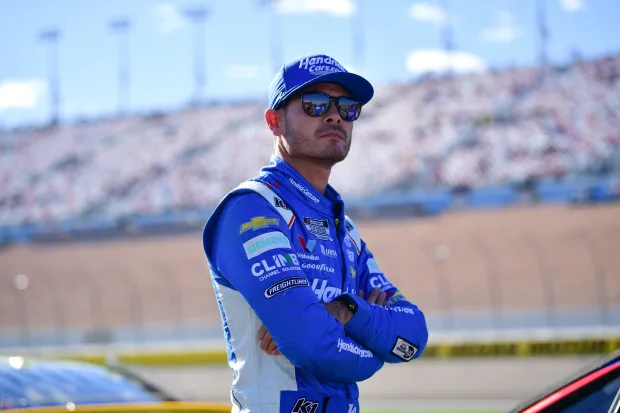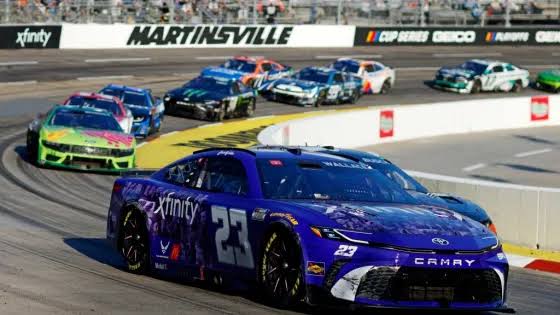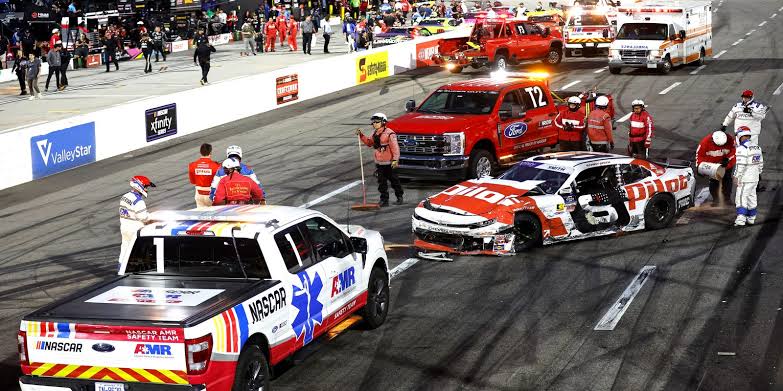Remember that nerve-wracking moment when Corey LaJoie’s car flipped and did a barrel roll across the grass at Michigan? It was a heart-stopping scene that had everyone watching in suspense. Thankfully, LaJoie walked away unharmed, but the incident left us all wondering—what if next time doesn’t end so well?
With Talladega Superspeedway fast approaching, NASCAR has been working hard to ensure that such terrifying flips don’t happen again. Roof flaps have been a crucial safety feature in helping cars stay grounded, but they’re not always enough. Now, with the intensity of the playoffs in full force, NASCAR officials are implementing new safety measures to keep the cars firmly on the track, including a Sharkfin spoiler to provide additional stability and protection for drivers.
Ahead of the Talladega race, NASCAR held a meeting with all the drivers to propose changes designed to enhance car safety. The primary idea on the table was the introduction of a vertical Sharkfin-like spoiler on the roof of the cars. The concept behind the Sharkfin was to improve the aerodynamic stability of the cars, keeping them from going airborne in dangerous situations. But the drivers, including Denny Hamlin, were not convinced that the Sharkfin was the solution. In fact, after hearing the feedback from drivers, NASCAR quickly realized this idea wasn’t going to fly—literally or figuratively.
During the September 30th episode of *Actions Detrimental with Denny Hamlin*, the Joe Gibbs Racing driver shared insights about what he and other drivers learned regarding NASCAR’s proposed changes. It turns out that most of the drivers, Hamlin included, were not fans of the Sharkfin’s appearance or its potential impact on racing. “It was just fantasyland,” Hamlin remarked, “like ‘here’s what I would do if I had to fix it,’ but that was mostly just social media buzz last week.”
Hamlin explained further that NASCAR briefed the drivers on their proposed safety changes for Talladega, which included a roof rail running across the windshield. But, according to Hamlin, drivers were quick to reject the idea. “For one, it looks like ass. And second, it hurts visibility,” he said bluntly.
Hamlin even referenced a tweet from Bozi Tatarevic, an auto racing writer, to express his frustration. The problem, as Hamlin explained, is that drivers often rely on the ability to remove tear-offs from their windshields, especially on tracks like superspeedways where debris can quickly cover their view. By implementing a new roof rail, NASCAR’s proposal would make it more difficult for drivers to clear their windshields, ultimately reducing their ability to see clearly during the race.
By October 1st, NASCAR had listened to the drivers’ concerns and made a decision. As reported by Bob Pockrass, the Sharkfin spoiler idea was officially scrapped. However, the Sharkfin wasn’t the only proposed change in NASCAR’s efforts to improve safety at Talladega. Despite the rejection of the fin, NASCAR is still moving forward with several other modifications aimed at keeping the NextGen cars on the ground and the drivers safe.
So, what’s NASCAR’s revised plan? Instead of the Sharkfin and windshield air deflector, they’ve introduced a series of changes that focus on reducing the likelihood of cars getting airborne. First, they’ll add fabric to the right side of the roof flap’s hinge, which will help block airflow that could lift the car off the track. Next, they’re extending the side skirts along the rocker panels, which will close the gap between the car and the track, improving aerodynamics and reducing lift during high-speed crashes. Finally, NASCAR plans to install a 2-inch roof rail extension on the right side of the car to further stabilize the vehicle in extreme conditions.
To better understand these changes, think of the 2-inch polycarbonate roof rail as a miniature wing. This rail is designed to direct airflow over the car and help trigger the roof flaps in case the car starts to spin or tip, keeping the vehicle grounded. The fabric attached to the right-side roof flap acts almost like a parachute, adding another layer of safety by reducing the chances of the car lifting off the track. Meanwhile, the extended rocker panel skirt, which is now made of aluminum, creates a tighter seal between the car and the ground, preventing the airflow beneath the car from lifting it during an accident.
All of these changes are aimed at one goal: preventing cars from becoming airborne in the event of a crash. NASCAR is putting in maximum effort to ensure that the terrifying flips we’ve seen in the past don’t happen again. Safety is the number one priority, and these adjustments reflect NASCAR’s commitment to keeping drivers safe, especially on tracks like Talladega, where speeds are high and the risks are even higher.
So, what’s your take on NASCAR’s safety measures? Do these new changes give you more confidence in the future of racing safety? With the playoffs underway and Talladega looming on the horizon, it’s clear that both fans and drivers are eager to see how these changes will impact the race. One thing’s for sure: NASCAR isn’t taking any chances when it comes to keeping drivers safe on the track.
NASCAR Bows to Denny Hamlin’s Pressure, Cancels Talladega move




